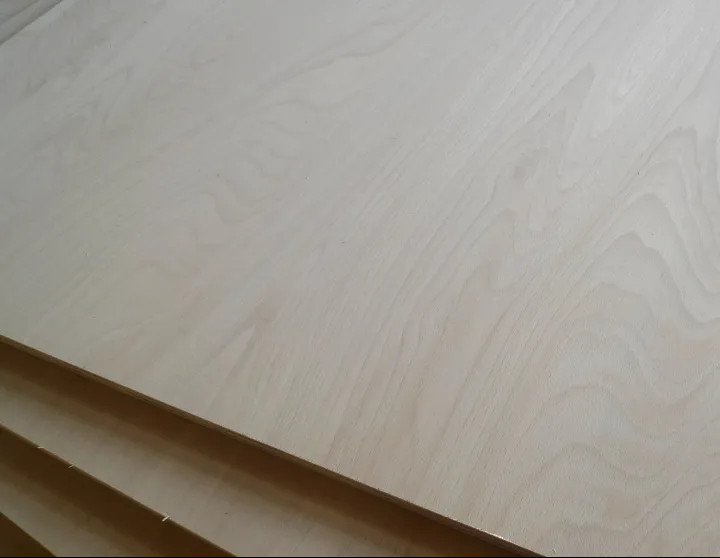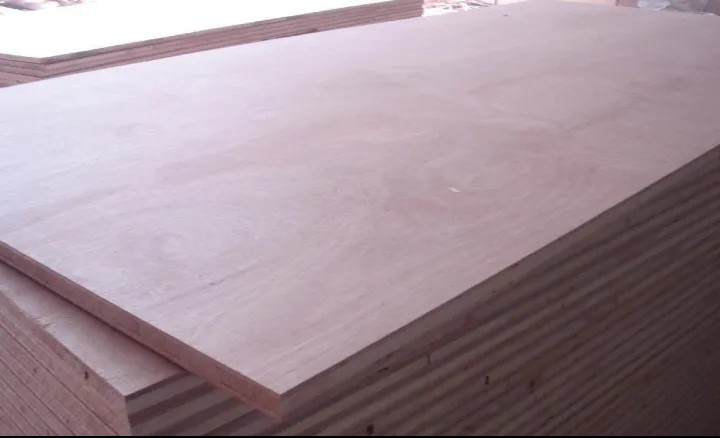1) Decorative veneer plywood is a man-made board made from natural wooden decorative veneer attached to plywood. Decorative veneer is a thin piece of wood made from high-quality wood through planing or rotary cutting
2) Characteristics of decorative veneer plywood:
Decorative veneer plywood is one of the most commonly used materials for indoor decoration. Due to the fact that the decorative veneer on the surface of this product is made of high-quality wood through planing or rotary cutting, it has better decorative performance than plywood. This product is naturally simple, natural and noble, and can create an elegant living environment with the best affinity for people.
3) Types of decorative veneer plywood:
Decorative veneer can be divided into single-sided decorative veneer and double-sided decorative veneer according to the decorative surface; According to its water resistance, it can be divided into Class I decorative veneer plywood, Class II decorative veneer plywood, and Class III decorative veneer plywood; According to the texture of decorative veneer, it can be divided into radial decorative veneer and chord decorative veneer. The common one is single-sided decorative veneer plywood. The commonly used wood types for decorative veneers include birch, ash, oak, elm, maple, walnut, etc.
4) Classification of decorative veneer plywood:
The standard for decorative veneer plywood in China stipulates that decorative veneer plywood is divided into three levels: Superior products, first-class products and qualified products. This reminds manufacturers and consumers that other forms of grading do not comply with China's standards for decorative veneer plywood. For example, some manufacturers have a label level of "AAA", which is a corporate behavior.
5)The performance requirements of national standards for decorative veneer plywood: The current recommended standard in China is GB/T 15104-2006 "Decorative veneer artificial board", which is implemented by the vast majority of enterprises in production. This standard specifies indicators for decorative veneer plywood in terms of appearance quality, processing accuracy, and physical and mechanical properties. Its physical and mechanical performance indicators include moisture content, surface bonding strength, and immersion peeling. GB 18580-2001 "Formaldehyde Emission Limits for Indoor Decoration Materials, Artificial Panels and Their Products" also specifies the formaldehyde emission limit indicators for this product.
① The national standard stipulates that the moisture content index of decorative veneer plywood is 6% to 14%.
② The surface bonding strength reflects the bonding strength between the decorative veneer layer and the plywood substrate. The national standard stipulates that this indicator should be ≥ 50MPa, and the number of qualified test pieces should be ≥ 80%. If this indicator is not qualified, it indicates that the bonding quality between the decorative veneer and the substrate plywood is poor, which may cause the decorative veneer layer to open and bulge during use.
③ Impregnation peeling reflects the bonding performance of each layer of decorative veneer plywood. If this indicator is not qualified, it indicates that the bonding quality of the board is poor, which may cause adhesive opening during use.

④ Formaldehyde release limit. This indicator is a mandatory national standard implemented by China on January 1, 2002, which is the "production permit" for related products. Products that do not meet this standard are not allowed to be produced from January 1, 2002; This is also the "market access certificate" for related products, and products that do not meet this standard are not allowed to enter the market circulation field from July 1, 2002. Exceeding the formaldehyde limit will affect consumers' physical health. The standard stipulates that the formaldehyde emission of decorative veneer veneer plywood should reach:E0level : ≤0.5mg/L, E1 level ≤ 1.5mg/L, E2 level ≤ 5.0mg/L.
Choice
In the production of plywood, many varieties of designs and colors have been derived, among which the most important one is to stick a thin layer of decorative veneer on the surface of the original plywood, known as decorative veneer plywood, abbreviated as decorative board or decorative panel in the market.
It is worth noting that common decorative panels are divided into natural wood veneer decorative panels and artificial thin wood decorative panels. Natural wood veneer is a thin veneer made from precious natural wood through planing or rotary cutting processing. Artificial veneer is a decorative veneer made from low-cost raw wood, which is spun and cut into wooden squares through a certain process of gluing and pressing. It is then planed and cut into decorative veneer with beautiful patterns.
Usually, natural wood veneers are decorated with decorative veneers that have good patterns and high value, such as cypress, oak, rosewood, and ash. However, it should be specified in the product name, such as "cypress veneer plywood", "water ash sliced plywood", or "cherry wood veneer". The basic characteristics of "decorative board" are reflected in several naming methods such as "veneer", "slicing", and "decorative board". However, it cannot be abbreviated as cypress plywood or water ash plywood, as these abbreviations refer to plywood panels and bottom plates made of cypress or water ash. Another issue is that the production of furniture with decorative panels is increasing. Although these furniture may have the appearance of "cypress wood" or other wood grains, the overall wood used for furniture is made of other wood. Nowadays, shops label these furniture as“

Key selection points
1) Choose different types, grades, materials, decorations, and sizes of plywood based on factors such as engineering properties, usage locations, and environmental conditions.
2) The decoration should use precious wood with thin veneer
3) The plywood used for interior decoration of buildings should comply with the provisions of GB50222 "Fire Protection Code for Design of Interior Decoration of Buildings"
4) Concealed parts that may be affected by moisture and occasions with high waterproof requirements should consider using Class I or Class II plywood, and Class I plywood should be used for outdoor use.
5) Panel decoration requires the use of transparent varnish (also known as varnish) to preserve the natural color and texture of the wood surface. Emphasis should be placed on the selection of panel materials, patterns, and colors; If the pattern and color of the panel do not need to be considered, the grade and category of plywood should also be reasonably selected based on the environment and cost.
Post time: May-10-2023
